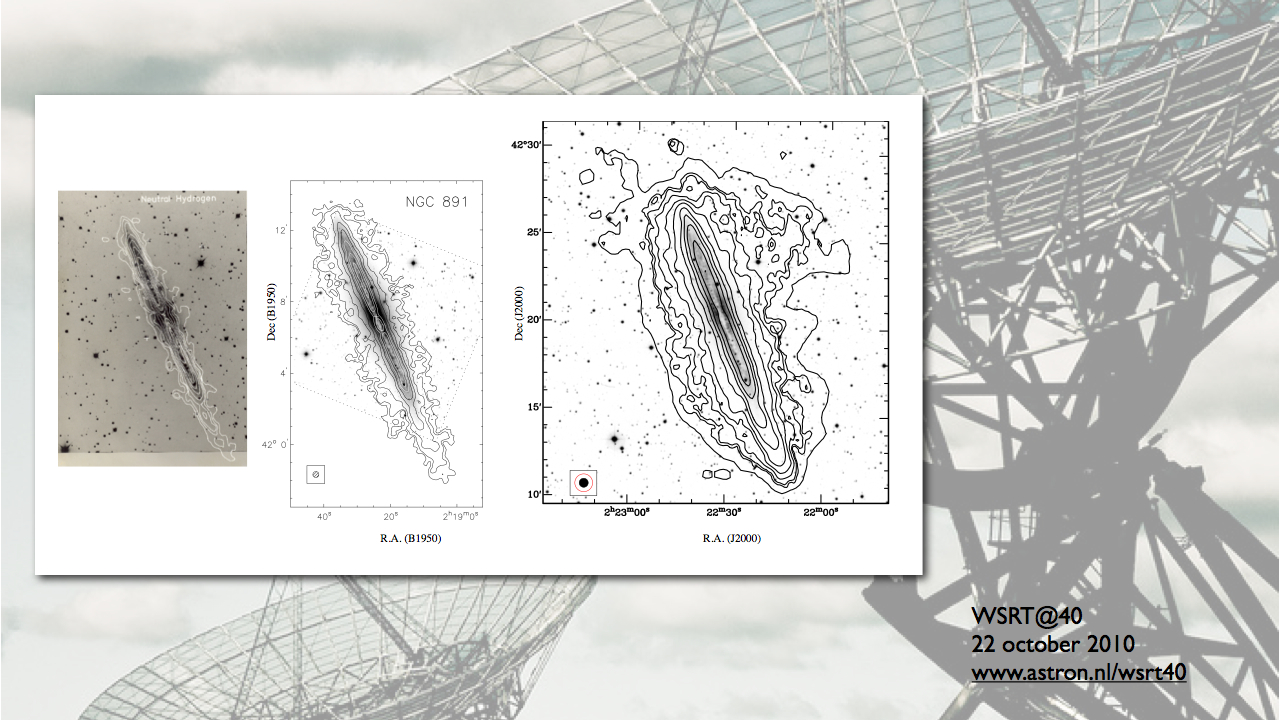| Description: | This year, the Westerbork Synthesis Radio Telescope celebrates its 40th anniversary. This will be marked on the 22nd of October 2010 with an on-site mini-symposium (see also http://www.astron.nl/wsrt40 ). One of the things discussed at this meeting is the enormous improvement over the years of the sensitivity and capabilities of the frontends and of the line backend. Spectral-line work with the WSRT started in the seventies with the 80-channel system. Several other systems were installed over the years, with the current backend put on the telescope about a decade ago. In 2 years, another, completely new system (Apertif), again more powerful, will be put on the telescope. These ever more powerful systems have given astronomers ever improving possibilities to do their astronomy. Not only has the sensitivity improved by about 2 orders of magnitude, also the bandwidth over which high-resolution spectral-line work can be done has improved tremendously.
Because of this evolution of capabilities, astronomers have been able to make more detailed and more sensitive studies of, in particular, the neutral hydrogen in nearby galaxies and have continued to make interesting disciveries. The progress is illustrated in the picture above where the results of 3 studies of the neutral hydrogen in NGC 891 are shown which have been done over the years. From left to right is the neutral hydrogen as detected in NGC 891 in the seventies by Sancisi & Allen (1979), in the nineties by Swaters et al.(1997), and just a few years ago by Oosterloo et al. (2007). All images are, for the time they were made, among the deepest HI observations ever done and are made with observations of very similar length. The difference in sensitivity is about a factor 100: the lowest contour in the data of Sancisi & Allen is 5 x 1020 cm-2, in that of Swaters et al. 7 x 1019 cm-2 and in the Oosterloo et al. it is 5 x 1018 cm-2. The most recent data reveals that NGC 891 has a large amount of neutral hydrogen in its halo, something totally undetected in the 1979 data and only faintly hinted at by the 1997 data. |

